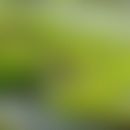Synonym(s)
DefinitionThis section has been translated automatically.
Asparagi rhizoma, also known as asparagus rhizome, is harvested from mid-April to June. It is used as a vegetable, but also as a drug, which is used in herbal medicines for inflammatory diseases of the urinary tract, among other things.
Commission E Monograph: Irrigation for inflammatory diseases of the urinary tract, prevention of kidney and bladder stones.
IngredientsThis section has been translated automatically.
Asparagus rootstock contains saponins, for example the steroid saponins asparagosides A, B, D and G, diosgenin and yamogenin. Other ingredients are proteins, minerals (including large amounts of calcium salts), the amino acids arginine and aspartic acid as well as inulin-like fructans such as asparagosine and asparagose.
The breakdown of aspartic acid by the asparagus' own degradation product S-methyl-3(methylthio)-thiopropionate results in the sulphurous urine odor after eating vegetable asparagus.
You might also be interested in
EffectsThis section has been translated automatically.
Extracts of the dried asparagus rootstock had a slight antihypertensive and diuretic effect.
Field of application/useThis section has been translated automatically.
Asparagus rhizome is used for inflammatory diseases of the urinary tract, controlled borderline hypertension or chronic venous insufficiency.
DosageThis section has been translated automatically.
The daily dose is between 45 and 60 g of the fresh drug. Asparagus rhizome is usually taken in the form of tea infusions (for flushing therapy) or capsules or film-coated tablets.
Commission E: 2000 to 2800 mg of dried asparagus powder per day, drink plenty of fluids
Undesirable effectsThis section has been translated automatically.
Allergic skin reactions may occur in rare cases. Asparagus can trigger gout attacksdue to its high purine content!
ContraindicationThis section has been translated automatically.
In the case of existing oedema due to restricted heart or kidney function, flushing therapy with asparagus rootstock should be avoided. Also in the case of existing inflammatory kidney diseases, since there is insufficient experience, the intake should be avoided.
InteractionsThis section has been translated automatically.
There are no known interactions with other substances.
Note(s)This section has been translated automatically.
During flushing therapy, care must be taken to ensure an adequate fluid intake of at least 2 liters/day.
Rare: Allergy to asparagus on skin contact. Contact allergen: Growth substance 1,2,3-trithian-5-carboxylic acid Occurs e.g. when cutting, peeling, canning or selling asparagus (asparagus scabies). The main cause of allergic contact reactions is 1,2,3-trithiane-5-carboxylic acid. This is heat-labile and is inactivated during cooking.
LiteratureThis section has been translated automatically.
- Schilcher H (2016) In: Leitfaden Phytotherapie, Urban & Fischer Verlag Munich, p. 299 f.
- https://heilkraeuter.de/lexikon/spargel.htm
- https://www.pharmazeutische-zeitung.de/ausgabe-192009/gesundheit-mit-koepfchen/
- Montag A (2023) Plants and skin. Springer-Verlag GmbH. S. 909-912




